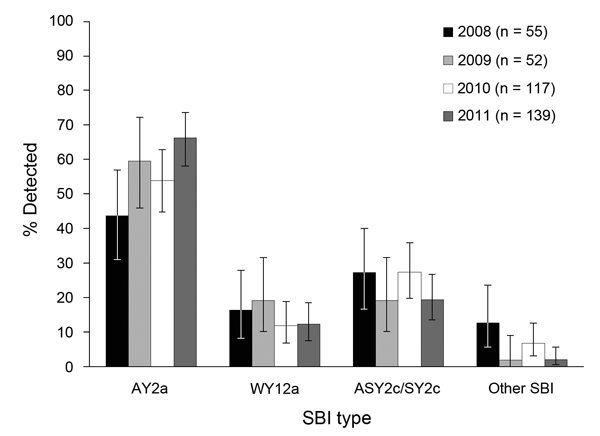Volume 20, Number 12—December 2014
Research
Geographic Divergence of Bovine and Human Shiga Toxin–Producing Escherichia coli O157:H7 Genotypes, New Zealand1
Figure 1

Figure 1. Proportional distributions, stratified by year, of Shiga toxin–encoding bacteriophage insertion (SBI) types AY2a, WY12a, and ASY2c/SY2c of 363 human Shiga toxin–producing Escherichia coli O157:H7 isolates from clinical case-patients in New Zealand, 2008–2011. Error bars indicate 95% CIs.
1Preliminary results from this study were presented at the New Zealand Veterinary Association Conference; June 16–20, 2014, Hamilton, New Zealand.
Page created: November 18, 2014
Page updated: November 18, 2014
Page reviewed: November 18, 2014
The conclusions, findings, and opinions expressed by authors contributing to this journal do not necessarily reflect the official position of the U.S. Department of Health and Human Services, the Public Health Service, the Centers for Disease Control and Prevention, or the authors' affiliated institutions. Use of trade names is for identification only and does not imply endorsement by any of the groups named above.